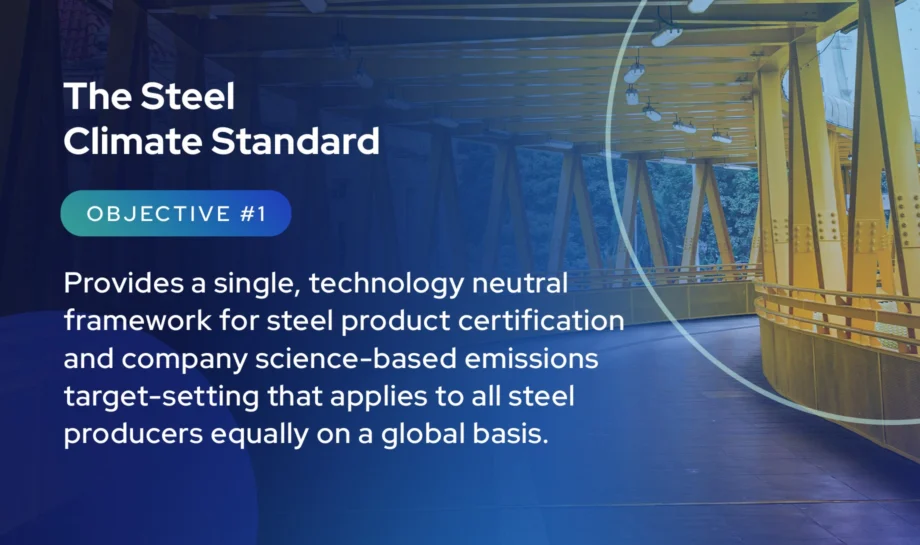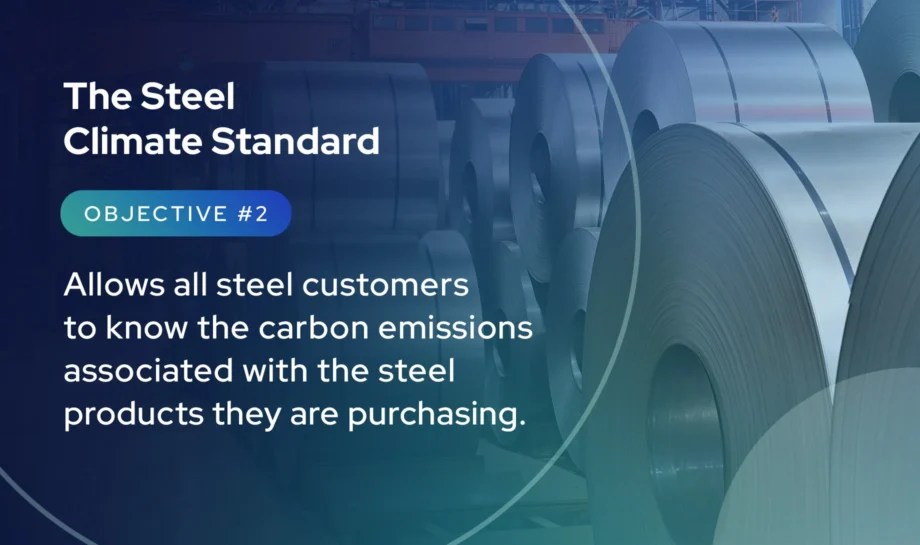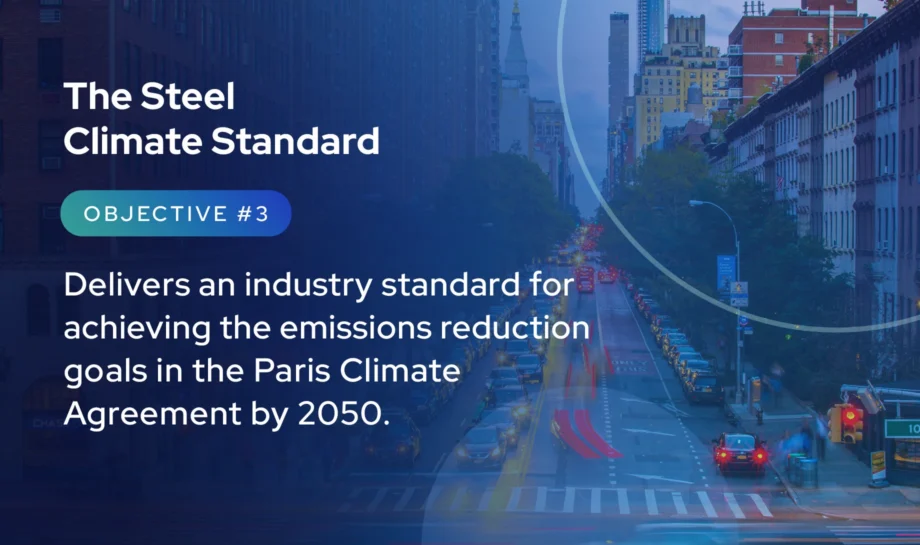
Our Mission
The Global Steel Climate Council Inc. (GSCC) is an international coalition of steel producers and stakeholders committed to achieving a 1.5° C scenario by the year 2050. The GSCC advances climate strategy by sharing best practices, establishing standards and advocating for carbon emissions reductions by members of the steel industry.
We can accomplish this. The Steel Climate Standard will lead to a cleaner future by facilitating greenhouse gas emissions reductions in the global steel industry. The framework consists of reduction methods within a comprehensive system boundary that includes Scope 1, 2 and 3 emissions from mining/resource extraction to the hot rolling process and aligns with a science-based glidepath to achieve 2050 goals, irrespective of the production process used to make steel.
Why We're Here
The world needs steel. Steel is an essential engineering material for the global economy. It is a critical material used to manufacture our vehicles and machinery, construct our buildings and factories, produce our energy, and much more. Steel is also playing a central role in the transition to a greener economy with the production of electric vehicles, wind turbines, solar arrays, and other clean tech products that require low carbon steel inputs.
Steel is fundamental for advancing a circular economy because its many different applications and components can efficiently be recycled, reused and remanufactured.
The world needs to lower its greenhouse gas (GHG) emissions. The GSCC® is leading the charge to reduce GHG emissions and encourage investments in lower emissions technology as part of the global effort to decarbonize economies and societies. Steel producers around the world are at different stages in their efforts to reduce emissions and achieve sustainable production, but regardless of their progress, GSCC® members are committed to achieving the net zero potential outlined by the signatories of the 2015 Paris Climate Agreement.
We already have the technology. Steelmakers have become more efficient, and producing a tonne of steel today requires only 40% of the energy it did in 1960. Many steelmakers around the world have successfully converted steel production processes to maximize steel’s circularity, incorporated power generation fueled by renewable energy and partnered with low emission service providers, resulting in lower carbon intensive steel products. This means that technologies already exist to cut global steelmaking emissions by over 70%. And new technologies are on the horizon that will reduce emissions even further, such as hydrogen-based direct reduction ironmaking, carbon capture and utilization and supply chain digitization.

We need a global standard. Customers need to know the GHG emissions intensity of the steel they are purchasing to meet their company’s ambitions related to decarbonization commitments, and the world community is calling on the steel industry to act. The Paris Climate Agreement’s 1.5° C objective by 2050 assumes one net zero goal for the steel industry, which requires one standard to measure and report carbon emissions from steel. The GSCC® Steel Climate Standard achieves that with a transparent, science-based, verifiable, time-bound, technology neutral approach to steel decarbonization.
GSCC® members are putting action behind their words. Irrespective of the production method, the Steel Climate Standard is ambitious, and steel producer members are signaling their ambitious commitment and holding themselves accountable in the process. It incentivizes innovation and avoids rewarding inaction, such as by alternative approaches that allow “green” claims by higher-emitting producers.
A truly effective lower-carbon steel standard must be one in which actual, attained carbon emissions are measured, and the standard must apply equally to all producers on a global basis.
The standard will lead to the global steel industry significantly reducing carbon emissions through science-based emissions standard setting based on actual emissions that would apply to all producers equally on a global basis. The Standard incentivizes actions that will generate decreases in carbon emissions to achieve the 1.5° C science-based emissions target for the global steel sector.



